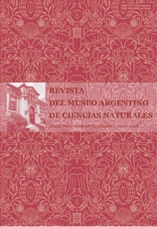Variabilidad genética en coipos, Myocastor coypus, y su relación con la presión de caza
Resumen
Genetic variability in coypus, Myocastor coypus, and its relation with hunting pressure.
Genetic variability of coypu in sites that support different hunting pressures was analysed through PCR amplification of RAPD markers. DNA was extracted from tissue samples obtained in five freshwater sites located in Luján zone, north-east of Buenos Aires province, Argentina, between October 1999 and September 2000. Fifty-one RAPD markers were obtained. Forty-nine of these were polymorphic between individuals. The analysis of molecular variance (AMOVA) showed a high genetic variability between sites, which would indicate that individuals from these sites are genetically differentiated. Genetic diversity within each site was negatively correlated with hunting pressure, while a positive correlation between genetic diversity and population size was observed. Genetic distance between immigrants, residents and immigrants-residents were significantly different, showing that immigrant individuals are more related between them than with the rest. It is proposed that in the Pampas Region, where the landscape is fragmented into parcels having agricultural-cattle use, a source-sink dynamic between parcels protected and not protected from hunting pressure is established for the coypu where protected parcels would act as a source of individuals for the not protected ones
Genetic variability of coypu in sites that support different hunting pressures was analysed through PCR amplification of RAPD markers. DNA was extracted from tissue samples obtained in five freshwater sites located in Luján zone, north-east of Buenos Aires province, Argentina, between October 1999 and September 2000. Fifty-one RAPD markers were obtained. Forty-nine of these were polymorphic between individuals. The analysis of molecular variance (AMOVA) showed a high genetic variability between sites, which would indicate that individuals from these sites are genetically differentiated. Genetic diversity within each site was negatively correlated with hunting pressure, while a positive correlation between genetic diversity and population size was observed. Genetic distance between immigrants, residents and immigrants-residents were significantly different, showing that immigrant individuals are more related between them than with the rest. It is proposed that in the Pampas Region, where the landscape is fragmented into parcels having agricultural-cattle use, a source-sink dynamic between parcels protected and not protected from hunting pressure is established for the coypu where protected parcels would act as a source of individuals for the not protected ones
Texto completo:
PDFEnlaces refback
- No hay ningún enlace refback.

This work is licensed under a Creative Commons Attribution 3.0 License.

